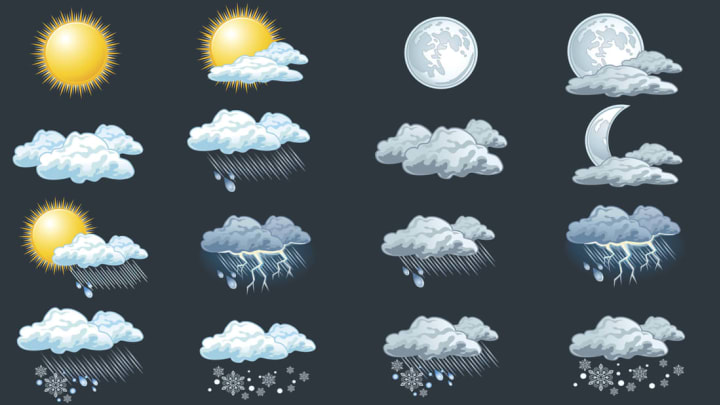Just about every alert you hear before a storm creeps up on the horizon was issued by the National Weather Service (NWS). We use this federal agency's services almost every day without thinking about it. Daily forecasts, storm alerts, weather radars, and satellite images are all produced by thousands of meteorologists who work day and night to keep us safe. One part of keeping us safe is making sure we understand what they're trying to tell us. After all, what good is a warning if you don't know exactly what they're trying to say? The NWS is working to simplify the warning process to give us better information and help us make better decisions to stay safe during hazardous weather.
Right now, the NWS issues dozens of different alerts that cover all sorts of dangerous conditions. These alerts are called watches, advisories, and warnings, with each respective category carrying a greater sense of urgency. There are alerts for tornadoes, severe thunderstorms, floods, hurricanes, winter storms, and even conditions like dense fog or blowing dust.
The sheer number of alerts can be daunting, not to mention the sometimes-convoluted language forecasters use to tell us what's going on. It's easy to miss the distinction between a tornado watch and a tornado warning, for example. The Hazards Simplification Project is an ongoing effort within the National Weather Service to whittle down the number of alerts and use clearer language to give us a leg-up on dangerous weather conditions.
The first couple of changes will go into effect later in 2017. The NWS currently issues 10 different alerts for winter weather events such as blizzards, ice storms, lake effect snow, and snowstorms. In the winter, the agency will reduce the number of alerts to just six. They're getting rid of the blizzard watch, for example, merging it with the winter storm watch. Winter weather alerts will also be issued in a “what/where/when” format, outlining exactly how much snow or ice you can expect, where it's expected, and when it's expected to happen. Previously, you had to scour a few paragraphs of text to figure out what was coming your way.
The NWS will also look into changing their weather maps to display just four different colors when weather alerts are in effect—a dramatic change from the hodgepodge of colors that smear weather maps today. Each weather alert currently has its own unique color on weather maps, so these maps are almost indecipherable when there's a lot of active weather across the country. The agency may soon replace all of these colors with just four hues—yellow, orange, red, and purple—to convey the severity and urgency of the alert in effect.

There are also some big changes in the works for warnings in the future. Meteorologists used to issue tornado and severe thunderstorm warnings for entire counties, which didn't work out too well as some counties in the United States are enormous compared to the size of a single thunderstorm. About a decade ago, they reduced these warnings to polygons that covered just the area expected to be impacted by the storm. This greatly reduced false alarms and helped warn only the people who needed to take shelter.
In the next couple of years, the NWS will roll out a project called Forecasting a Continuum of Environmental Threats (FACETs). This project will reduce those old warning polygons even further into a swath that shows the probability that a certain area will be affected by a tornado, large hail, or damaging winds. The resulting warning area, seen above, looks similar to the cone of uncertainty forecasters use ahead of hurricanes and covers a much smaller area than the old polygons. This will allow forecasters to warn only those directly affected by the approaching hazards, reducing false-alarm rates even further and giving people greater confidence that they should take action right away instead of waiting it out.
